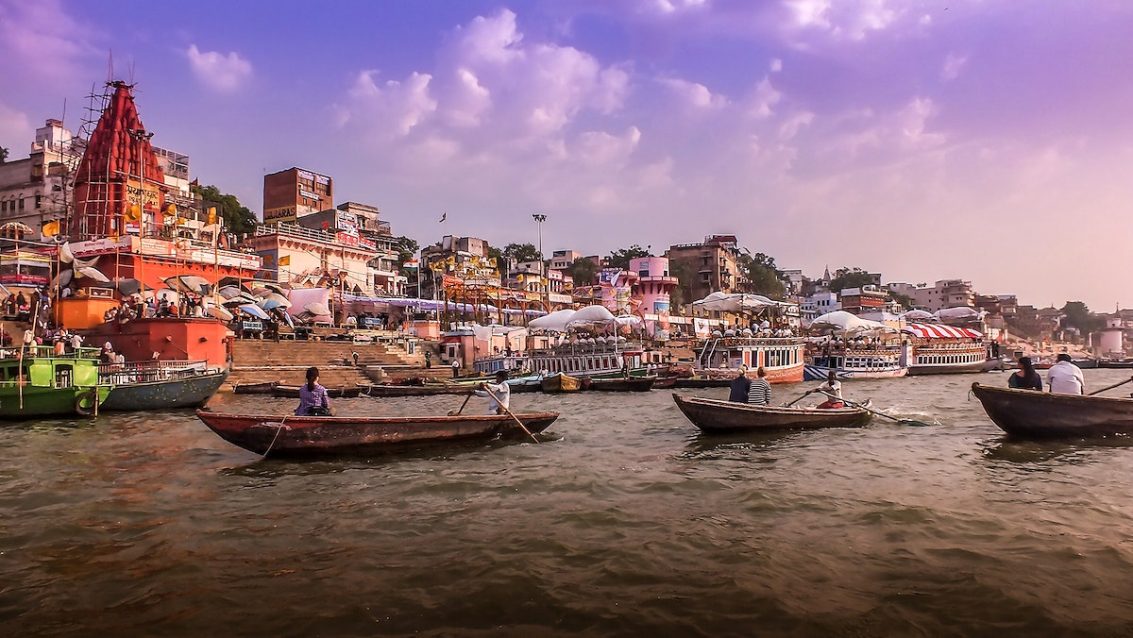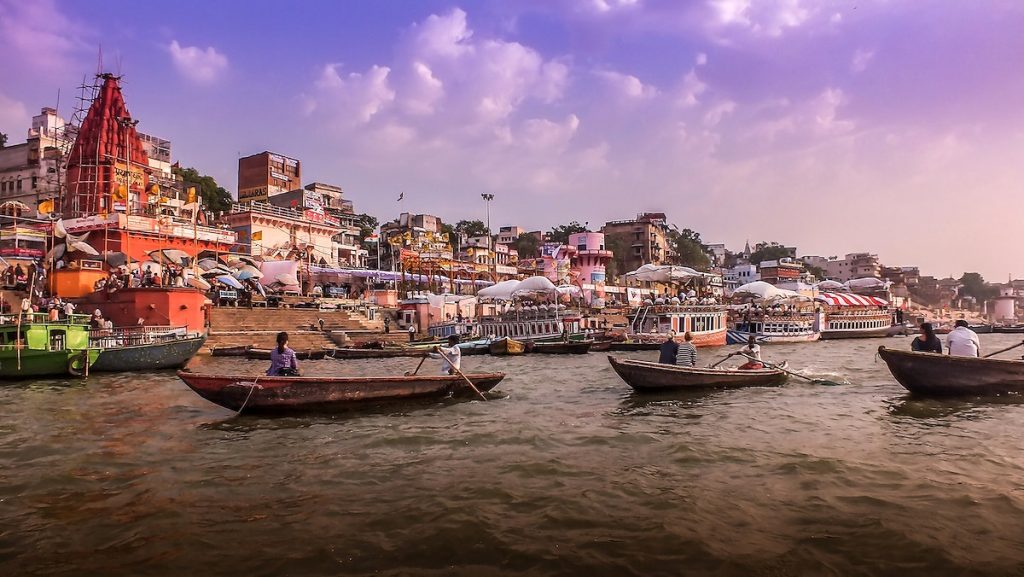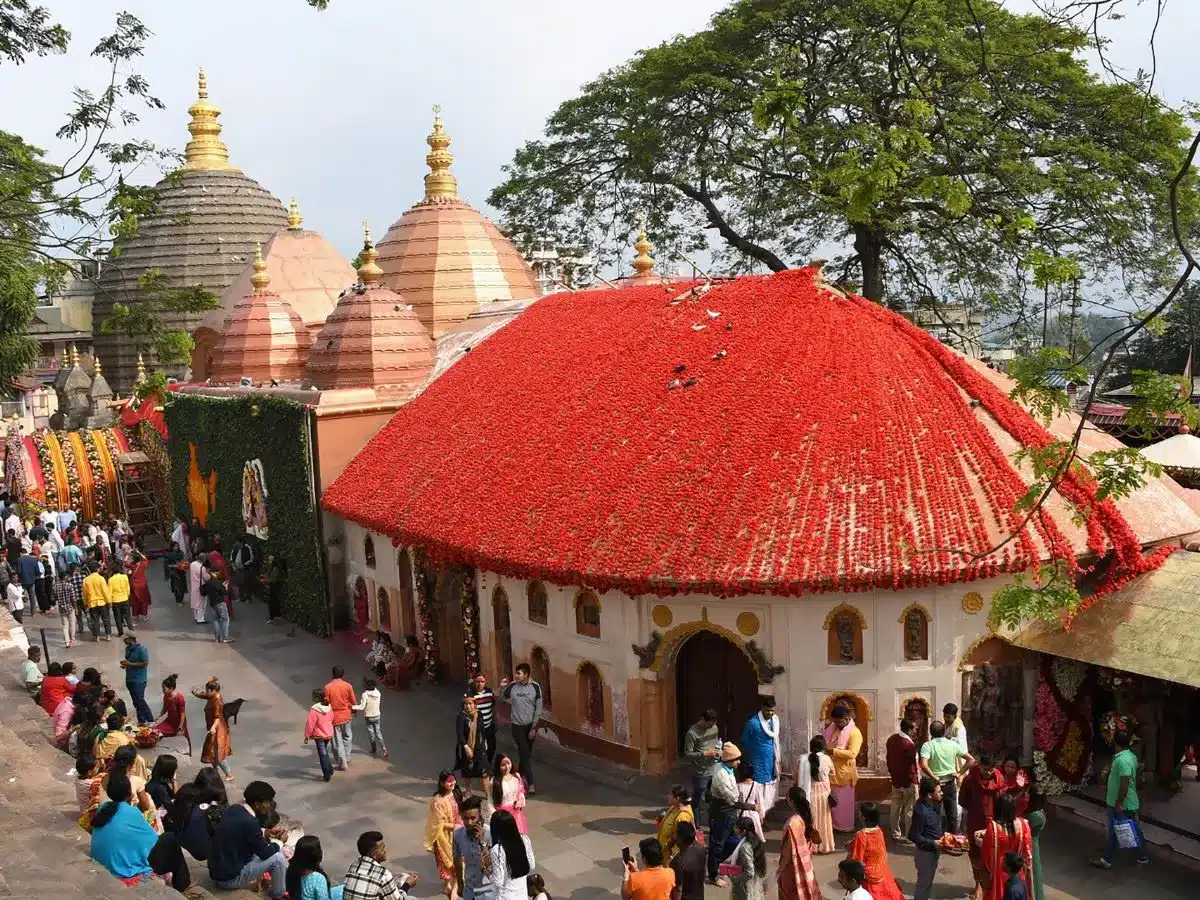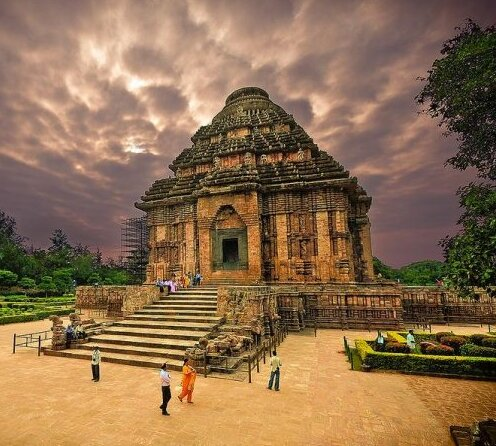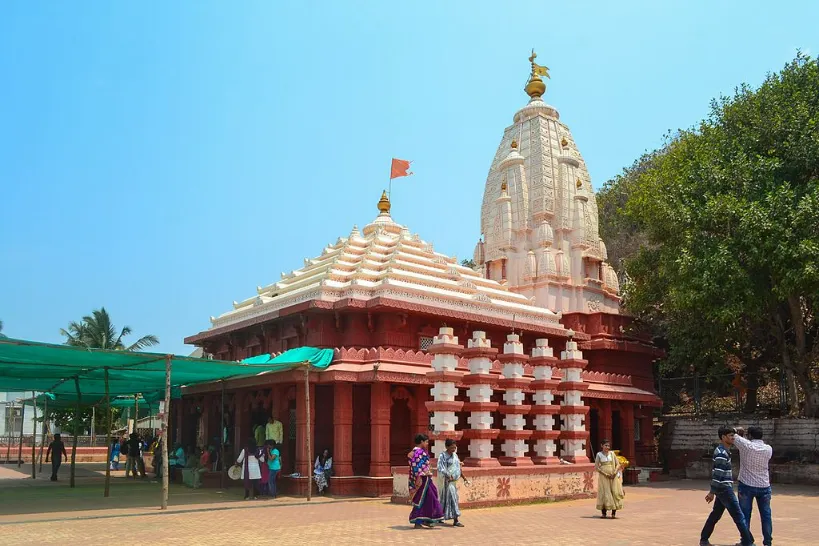Varanasi, often hailed as one of the world’s most ancient continuously inhabited cities traces its origins to the 12th century BC. Its prominence in the annals of history surged around two thousand years later when the revered Indian theologian, Shankaracharya, brought together diverse strands of Hindu thought. For millennia, the city has been a witness to the ceaseless burning of funeral pyres, a testament to its deep spiritual significance. It’s fascinating to note that Varanasi stands as perhaps the oldest living city on Earth.
I had buddies who couldn’t stop chatting about how divine Varanasi is. Half called it an overwhelming whirlwind of noise and mess, while the other half swore it was the serene haven of their dreams. With such contrasting reviews, I just had to see for myself. So, on a breezy noon, I stepped foot into this captivating city. Exiting the station, I was immediately swept into a wave of commotion that made me blurt out, “Whoa, where the heck am I?!” Rickshaws, bicycles, humans, and even horses hustled and bustled about. My brain tried to process it all, but it was like trying to watch a movie on fast forward.
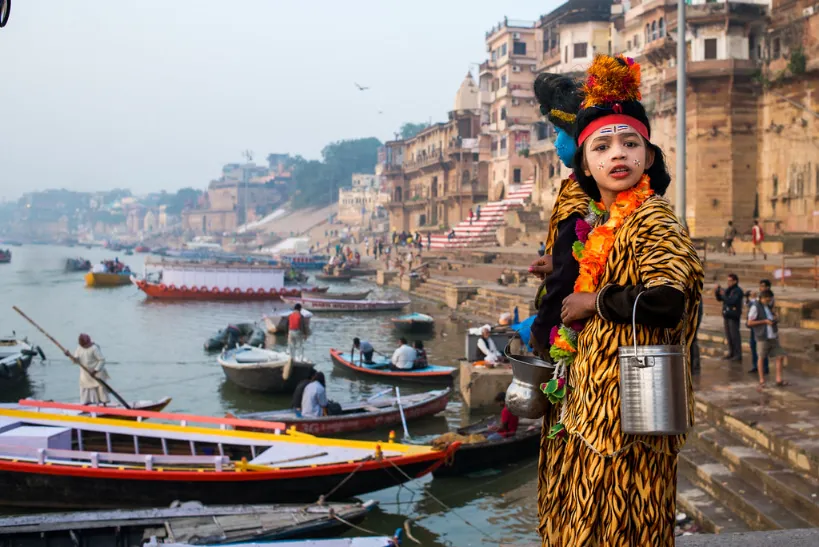
By the time my thoughts settled, a mob had surrounded me. “Need a hotel?” “Want a tour?” “Ride, sir?” Their voices jumbled, their prices sketchy, and their speed dizzying. If this was Varanasi’s “calm,” my friends had some explaining to do! Feeling like I’d been caught in a whirlwind, I finally blurted, “Enough!” It was a brief lull before the chaos resumed. Taking charge, I booked a car rental from Savaari, mainly for their no-nonsense pricing. “To Assi Ghat,” I told my driver, hoping for respite. The city scenes outside were an unending string of houses on houses, noises upon noises. If someone had told me this was a place of peace, I’d have laughed!
But when I arrived at Assi Ghat, everything shifted. Suddenly, I felt enveloped in a spiritual stillness I couldn’t explain. I was immediately surrounded by a profound sense of serenity that was hard to put into words. Side by side, a Hindu and a Muslim man were engrossed in their respective prayers, a poignant display of interfaith harmony that I had never seen up close. The river’s soft whispers, the gentle hum of distant voices — it all made me introspect like never before. The dual nature of Varanasi was baffling. Was it a chaotic storm or a tranquil paradise? Or both? Some folks can’t stand Varanasi’s hustle and bolt, while others never wish to leave. My driver said that there are books that state that even the Gods, having once resided in Banaras, yearned to return after being forced to leave.
They struggled to find their way back, and upon succeeding, vowed never to leave again. Eager to comprehend this pull, I delved deep into the lore and spirit of divine Varanasi, with the locals as my guide. Herein lies the tale of my discoveries.
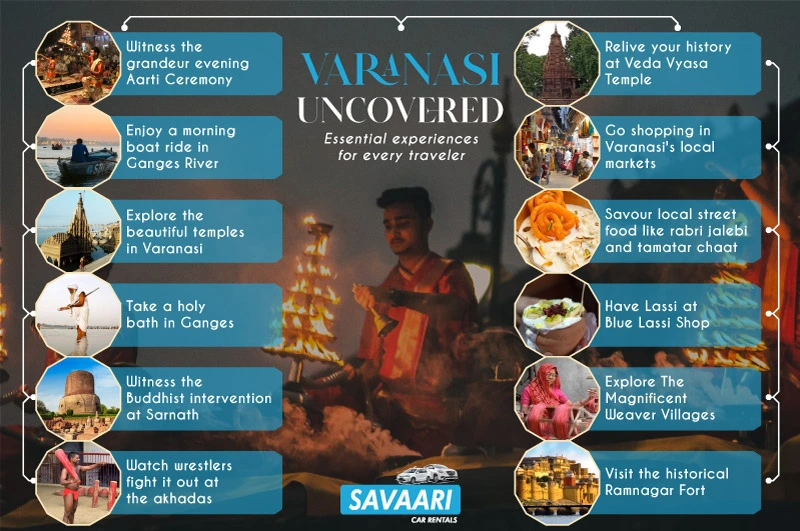
Threads of time – A journey through Varanasi’s history
As I was exploring Varanasi, it became immediately clear that the city was more than just an ancient place. It was a living testament to millennia of human civilization. Mark Twain, the English author and literature, who was enthralled by the legend and sanctity of Benaras, once wrote “Benaras is older than history, older than tradition, older even than legend and looks twice as old as all of them put together”.
During the 2nd millennium BCE, while other settlements were just beginning to emerge, Varanasi had already established itself as a hub of Vedic philosophy and religion. I could almost visualize its early streets lined with merchants trading silk fabrics, muslin, exquisite sculptures, and aromatic perfumes.
The Buddha himself, in the 6th century BCE, had chosen the nearby location of Sarnath to deliver his first sermon. During that time, Varanasi was the thriving capital of the Kingdom of Kashi. The city’s significance didn’t escape the notice of foreign travellers like Xuanzang, who, in 635 CE, marvelled at its expanse and grandeur along the banks of the Ganges. So, explore the historical richness of these sites by booking our affordable car rental service in Varanasi with driver.
As I wandered the city’s age-old lanes, I felt the rhythms of the Benares Gharana, a unique musical lineage born right here. The city’s melodies stem from the heart of Hindustani classical music. Varanasi’s legacy has produced luminaries in various fields, from poets like Kabir Das and Ravidas to spiritual leaders such as Guru Nanak Dev. Their presence seemed to echo in the very walls and pathways of the city.
However, my exploration of divine Varanasi also revealed its periods of struggle. The onset of Muslim rule in 1194 marked a turbulent chapter, with many of its revered temples facing destruction. Yet, the city’s spirit was indomitable. The reign of Mughal emperor Akbar in the 16th century revived some of its lost religious and cultural fervour. Even the challenges posed during Aurangzeb’s rule couldn’t suppress Varanasi for long, as it experienced a resurgence under the Marathas.
By the 18th century, Varanasi stood as an independent kingdom, holding its own even under British colonial rule. The British recognized its unique status, establishing it as a separate state in 1910. As I reflected on the events of 1947, when post-independence Varanasi became part of Uttar Pradesh, it struck me how seamlessly the city had integrated its ancient traditions with the evolving fabric of modern India.
I then realised that my sojourn in divine Varanasi wasn’t merely a visit to an ancient city; it was a deeply personal journey through epochs of time, culture, and resilience. Here, history isn’t confined to textbooks—it breathes, resonates, and thrives in every corner.
Cosmic confluence – Varanasi’s mythological significance
Varanasi resonates with deep mythological significance. For countless generations, Hindus have revered this sacred land as a portal to the divine. Here, amidst the ancient ghats and timeless rituals, it’s believed that death bestows moksha, freeing souls from the ceaseless cycle of birth and rebirth.
Shiva and Parvati – The divine heartbeat of Varanasi
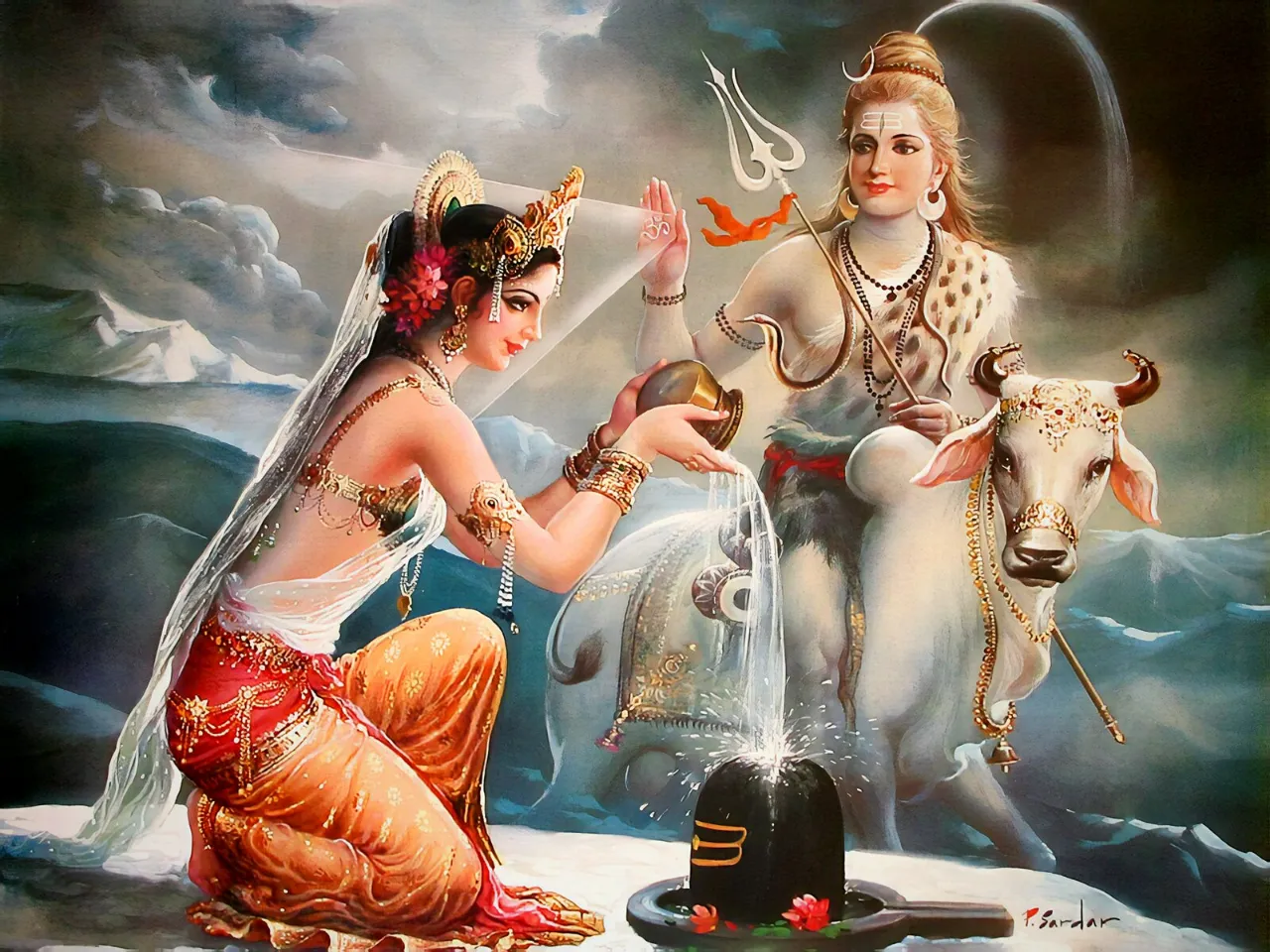
At the heart of divine Varanasi’s spiritual aura is the eternal bond with Lord Shiva and Goddess Parvati. According to popular religious legend, Lord Shiva made divine Varanasi his home after marrying Parvati. Though the true origins of this city remain shrouded in mystery, the sanctity of the Ganges here is unequivocal. This river, said to emanate from the matted locks of Lord Shiva, flows with a celestial power, believed by many to purify sins and redeem souls.
Mahabharata’s echoes – The dramatic tales of Kashi
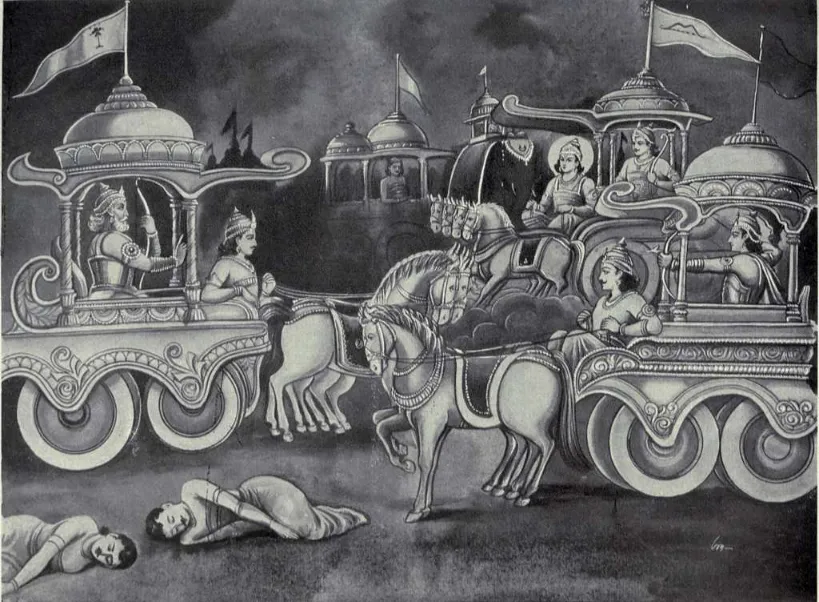
The tales of Varanasi’s divine significance also find their way into the epic Mahabharata. The city, then Kashi, became a battleground of destinies when Bhishma, in a dramatic turn of events, abducted the three princesses of Kashi: Amba, Ambika, and Ambalika. While Ambika and Ambalika’s fates intertwined with the ancestral lineage of the Kauravas and Pandavas, it was Amba’s tragic love story and quest for vengeance against Bhishma that stood out. Reincarnated as Shikhandi, her pivotal role in the Kurukshetra War fulfilled a divine prophecy, turning the tides against Bhishma, and sealing his fate. It makes up for one of the most significant spots in India mentioned in Mahabharata.
Jainism’s sacred roots in Varanasi – Birthplace of Tirthankaras
Tirthankaras are arihants who after conquering from the cycle of death and rebirth or gaining infinite knowledge preach the true dharma. In Jainism, the tirthankaras are the person who has conquered anger, attachment, pride, greed, inner passions, and personal desires. The Jain literature refers to Kashi as a Jain Tirtha (holy place), as four of Jain Tirthankaras were born here.

According to Jain literature, Kashi is the birthplace of Suparshvanath, Chandraprabhu, Shreyanshnath, and Parshvanath — the 7th, 8th, 11th, and 23rd Tirthankaras — respectively. The present Jain temple in Sarnath was built to commemorate the birthplace of Shreyanshanath, the 11th Tirthankara. He was born in the nearby village of Simhapur. The birthplace of the 8th Tirthankara Chandraprabhu is identified with Chandravati, which is an ancient village on Varanasi-Ghazipur Road.
The Bodhisatta’s wisdom – Jataka tales of divine Varanasi
In ancient Varanasi, the wise and righteous Bodhisatta was king. An exiled advisor, seeking revenge, became the chief advisor to the King of Kosala and convinced him of the Bodhisatta’s supposed weakness. To test this, the King of Kosala sent men to attack Varanasi thrice. Each time, the Bodhisatta showed mercy, reinforcing the perception of his weakness. Confident, the King of Kosala invaded Varanasi. Instead of fighting, the Bodhisatta surrendered, and he and his advisors were buried alive, meant to be devoured by jackals. However, the Bodhisatta bravely fended off a jackal, freeing himself and his advisors.
Two ogres, witnessing his wisdom, sought his help in dividing a corpse. After assisting them, the Bodhisatta confronted the King of Kosala, who, realizing his error, apologized and returned to his kingdom. The Bodhisatta emphasized the power of perseverance and the rewards of righteousness.
The location of Ramayana’s immortalization
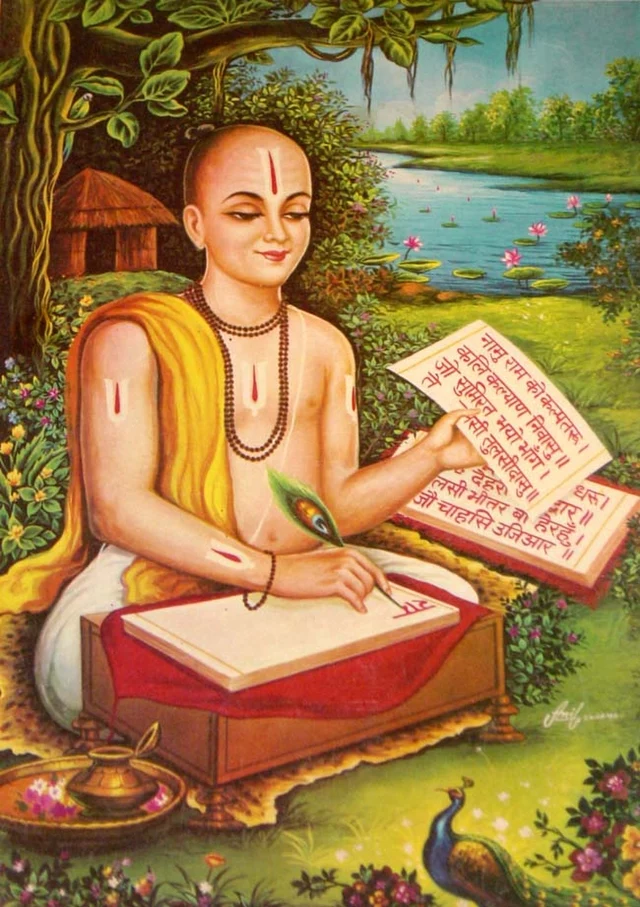
Constructed by a family of Varanasi, Tulsi Manas Temple is a modern temple dedicated to Lord Rama. It is situated at the place where Tulasidas, the great medieval seer, lived and wrote the epic “Shri Ramacharit manas”, which narrates the life of Lord Rama, the hero of the Ramayana. Verses from Tulasidas’ epic are on the walls of the temple.
Varanasi is more than just a city; it’s a living testament to India’s spiritual and mythological tapestry, an unbroken thread connecting past to present, humans to the divine. Every ghat, every ritual, and every whispered prayer here reverberates with tales as ancient as time itself.
Finding the portal to divinity in Varanasi
In my quest to find the doorway within divine Varanasi, I felt compelled to immerse myself entirely in its depths. The ancient city’s heartbeat seemed to synchronize with mine as I ventured on a transformative journey through its spiritual tapestry, rich culture, and maze of self-revelation. I used the help of this comprehensive travel guide to help me plan my exploration better. Here’s a recount of my adventures and reflections.
The Ghats: My day began at Assi Ghat, greeting the tender first rays of the sun. Embarking on a rowboat ride through the Ganges, I glimpsed the myriad of life that plays out on these historic banks: fishermen casting their nets, devotees immersing themselves in prayer, and tourists like myself soaking in the spiritual ambience. As dawn matured, Assi Ghat became a hub of activity. Devotees praying, music echoing in the air, and people engrossed in yoga. Amidst the meditative postures and mindful breaths, I felt an inner calm enveloping me. Yet, the city’s ghats held profound contrasts. Manikarnika and Harischandra Ghats, with their eternal fires, reminded me of life’s impermanence.
The Ganga Aarti: As dusk painted the sky, I was spellbound by the ethereal Ganga Aarti at Dasaswamedh Ghat. The chants, the ringing bells, and the synchrony of the priests illuminated not just the surroundings but also my inner self. It was a moment of profound connection – a conversation between my soul and the cosmos.

Temple Exploration: Varanasi’s skyline has spires of countless temples, each echoing tales of devotion, legends, and history. Venturing into these sacred spaces, I felt a deep connection to the past. The intricate carvings, the resonating bells, and the murmurs of prayers transported me to a world where faith was the rhythm, and every stone whispered secrets of bygone eras. These were not just buildings; they were living testaments to India’s rich spiritual and architectural heritage.
The Ganges Bath: Standing on the ghats, the Ganges stretched before me, invitingly. Taking the plunge, the cool waters enveloped me, and in that moment, I felt a profound connection to the universe. It wasn’t just a bath. It was a ritual of release, letting go of past regrets. I emerged out rejuvenated, with a sense of inner clarity and peace.
Sarnath: A short distance from Varanasi lies Sarnath, where time seems to pause. Walking amidst the age-old stupas and relics, I could almost hear the echoes of Buddha’s profound teachings. The deer park, with its tranquillity, seemed a world away from the bustling city. Every monument, every sculpture, was a page from history, chronicling the journey of a prince who became the beacon of enlightenment for the world.
Beyond the Ghats – Finding spirituality in divine Varanasi’s daily life
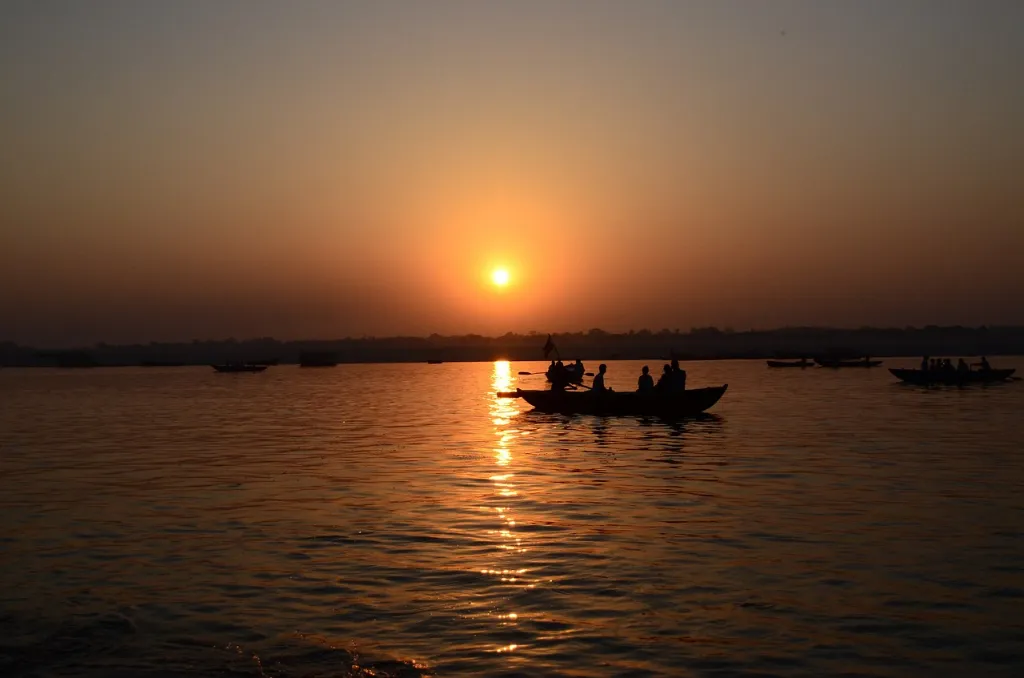
Varanasi, aka Benares or Kashi, is one of the oldest continuously inhabited cities in the world and holds immense spiritual significance for Hindus. While the ghats and temples are the most famous spiritual places, the city’s essence deeply interweaves into its daily life, which many visitors find spiritually enriching. Here are some aspects of daily life in Varanasi where one can find spirituality:
Art and Craft: The narrow lanes of Varanasi have artisans working on their crafts, from the world-renowned Banarasi sarees to intricate woodworks and sculptures. Watching these artisans at work, one can feel the dedication and spirituality they pour into their craft.
Boat Rides: A gentle boat ride on the Ganges, especially during the early hours or at sunset, can be a profound experience. The rhythmic sound of oars hitting the water, the panoramic view of the ghats, and the distant sounds of temple bells can be deeply calming.
Alleys and Lanes: Simply walking through the narrow, winding lanes of Varanasi can be a spiritual journey. The old buildings, the aroma of incense, the small shrines at unexpected corners, and the hum of daily life all contribute to the city’s unique atmosphere.
The Akhadas: The city revealed another layer when I stumbled upon its ancient akhadas. Observing the wrestlers, some of whom were surprisingly elders, was a testament to discipline and dedication. The reverence between the Guru and the disciple was palpable.
Shopping: The narrow alleys of Varanasi’s markets were a labyrinth of wonder. Everywhere I turned, the shimmering glint of the city’s famed silk sarees caught my eye. Each piece was a work of art. It has intricate patterns and a riot of colours that seem to dance in the light. Picking souvenirs was more than just shopping. It was like selecting fragments of the city’s soul, memories woven in silk that I could carry back with me.
The Gastronomy: Amidst the city’s spiritual aura, Varanasi had another gift – its mouthwatering delicacies. Each dish, from the fiery tang of tamatar chaat to the sweet symphony of rabri jalebi, was a culinary journey in itself. They were not just foods; they were stories, traditions, and love served on a plate. And as for the Banarasi paan? With its sweet and tangy flavors, it was a fitting finale to my gastronomic escapade, leaving a lingering taste of the city on my palate.
The Bhang Experience: In the heart of Godowlia Crossing, I indulged in a glass of thandai infused with bhang. The world seemed different afterwards, more vibrant as if I was seeing it through a prism of newfound clarity.
The mystery behind Varanasi’s enigmatic pull or resistance
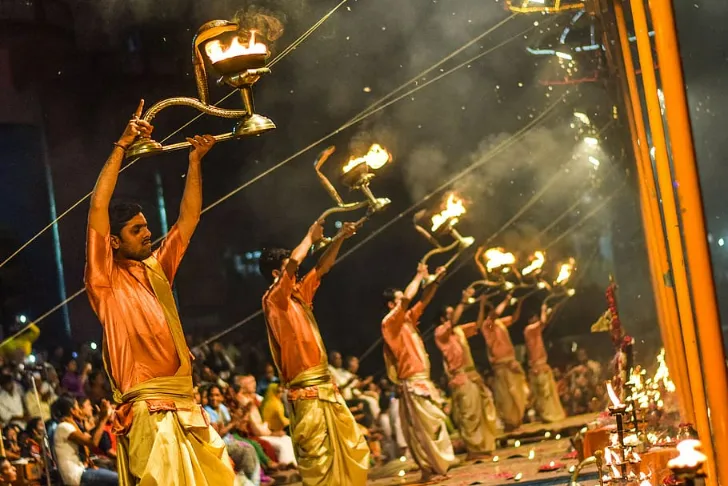
Returning to Assi Ghat for dinner, my hunger led me to a restaurant recommended by a friend. I spotted a group of four who looked like fellow travellers. Taking a chance, I asked if I could join them, and they agreed. They were Italians who’d lived in divine Varanasi for over 15 years. It felt strange knowing how foreigners left behind everything to spend their years in divine Varanasi. As we chatted about the city, I found their insights fascinating.
Back in my hotel room, I thought a lot about our talk. Varanasi is a city of contrasts. Some people come here to find peace, moving away from the busy world. The Ganges River makes many feel calm and relaxed. And there’s always a lot of sharing and learning in the city. This was because of the many thinkers, writers, and artists that visit. But there’s also a lot to process – like seeing bodies in the river or coming across unusual rituals.
For me, Varanasi had many mysteries. Some folks leave right after they arrive, and others decide to live here forever. How can a city be so busy yet feel peaceful at the same time? These questions stayed with me.
But one thing was clear: I had fallen in love with divine Varanasi. Every part of it, from its busy streets to its peaceful riverbanks, had grown on me. I wanted to stay longer, even if I had to go back to my job soon. To make the most of my extended stay, I used the Savaari app, which helped me get around the city easily with a local driver. If you’re ever put off by Varanasi at first, I’d say stick around. It’s easy to be overwhelmed, but if you give it time, you might just fall in love like I did. The city’s charm is hard to explain but impossible to forget. It most certainly is a device connecting to divinity.
Last Updated on March 12, 2024 by aditya
